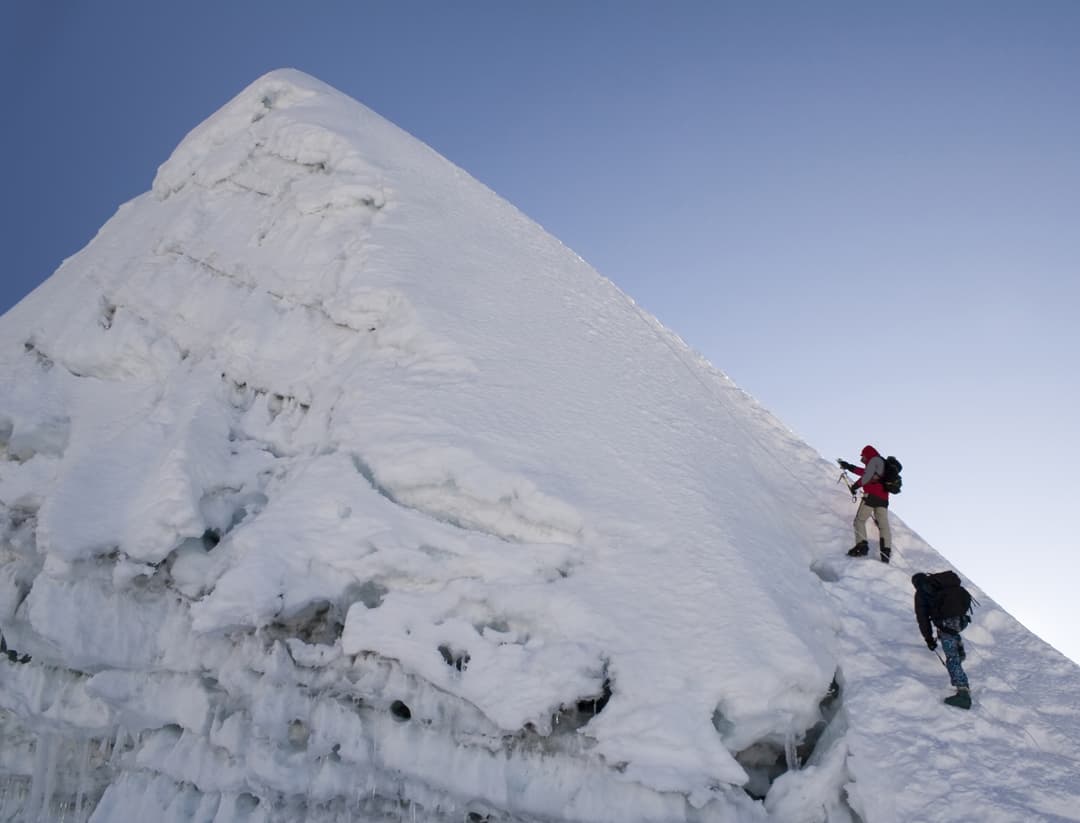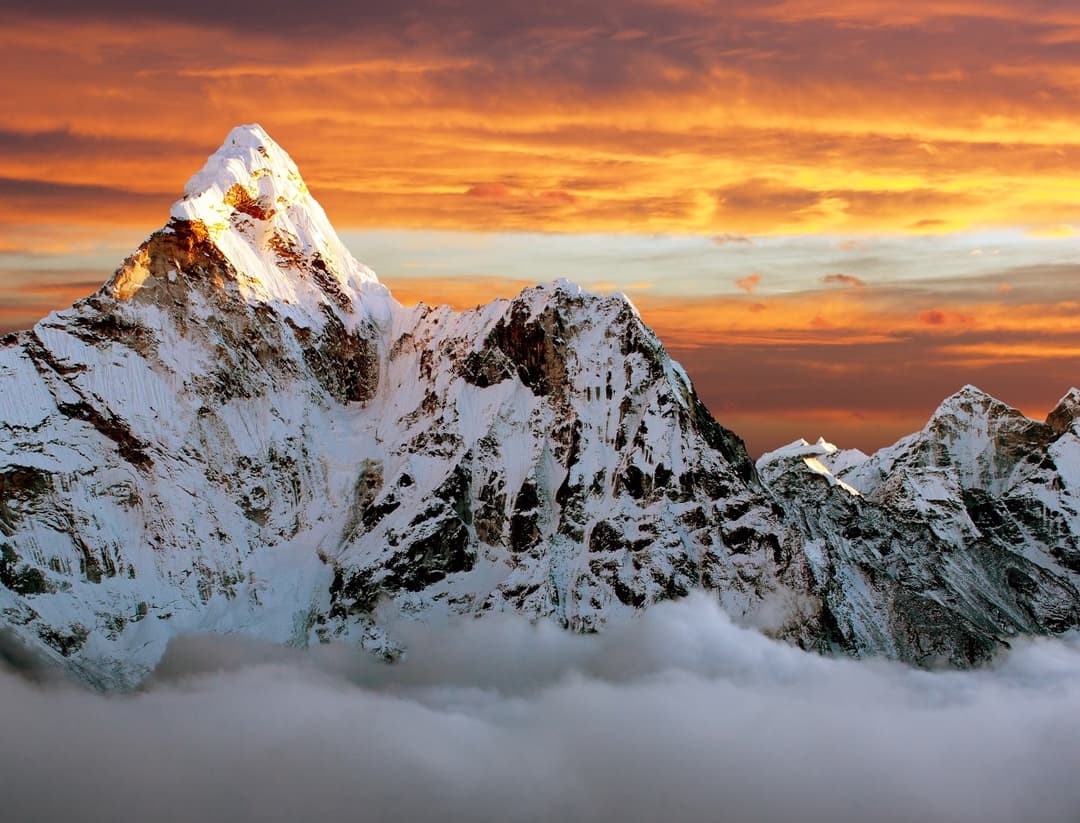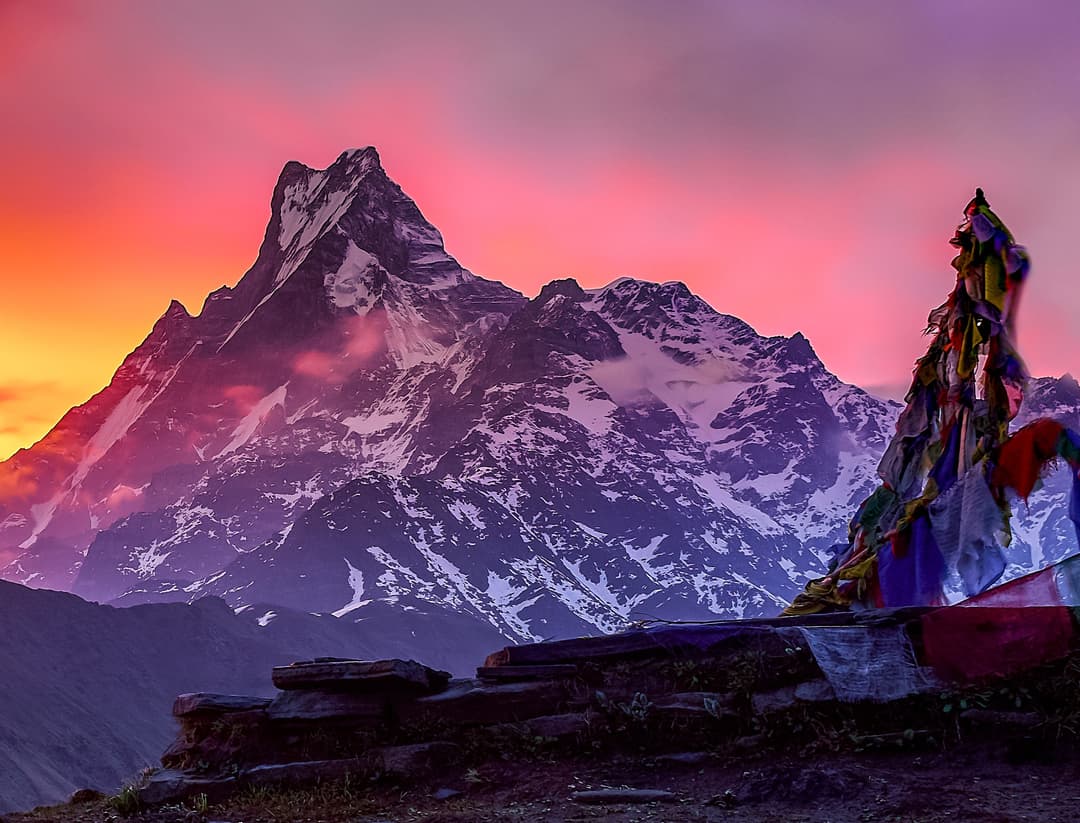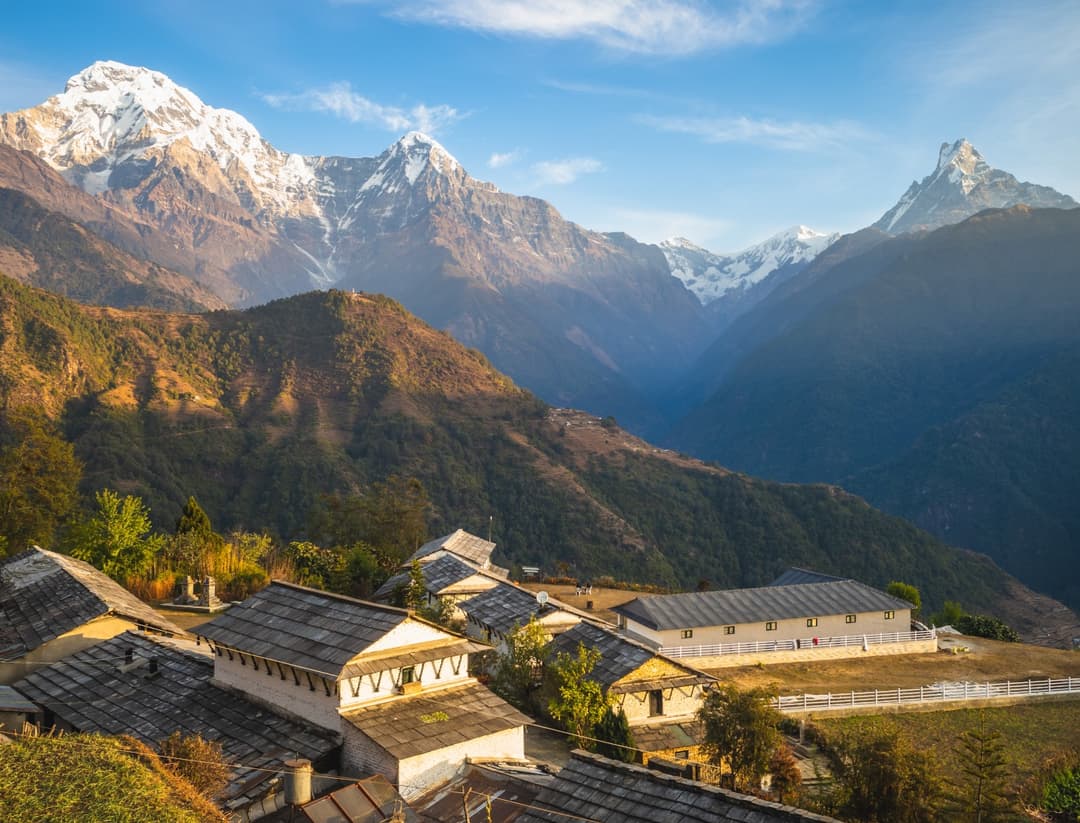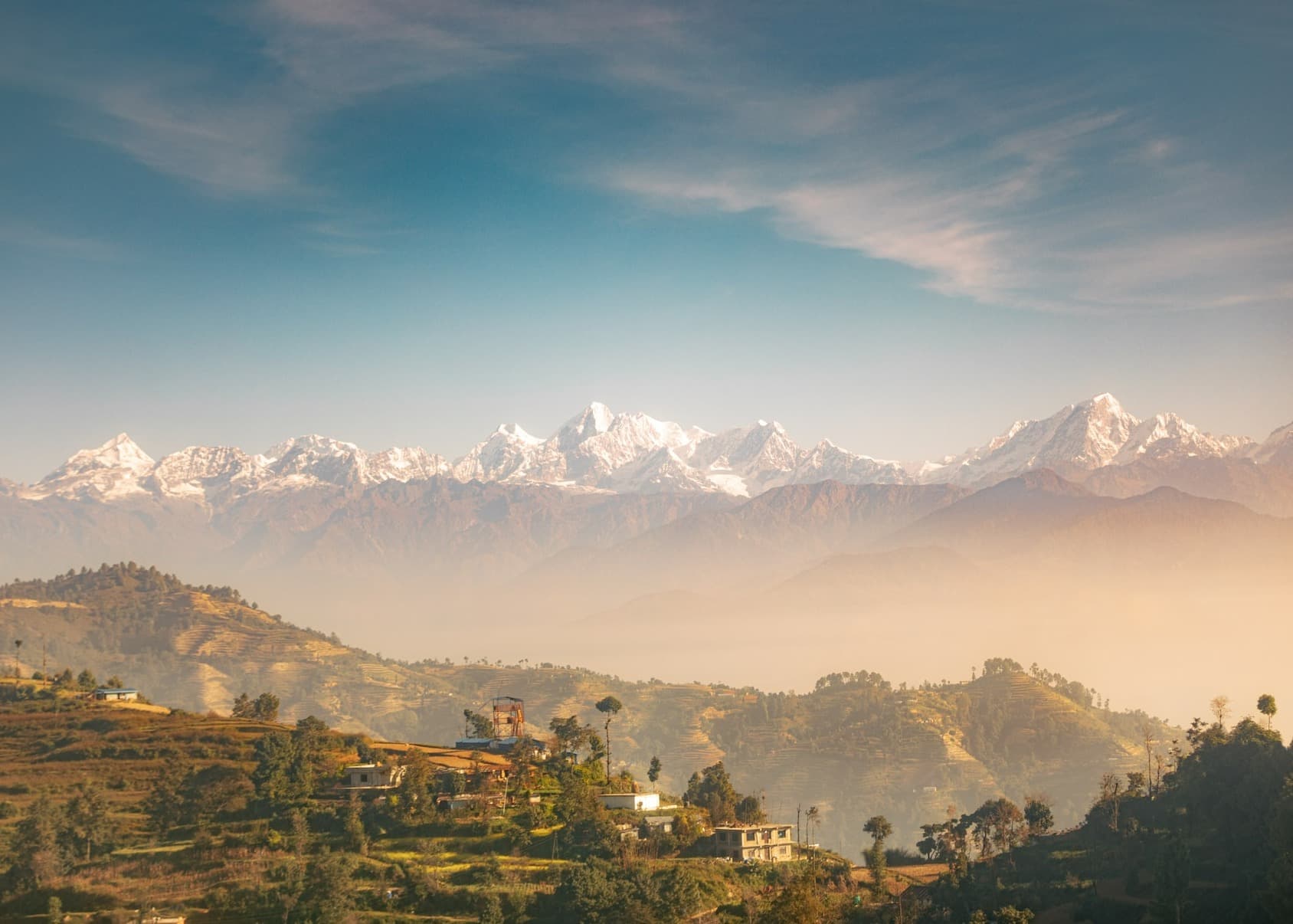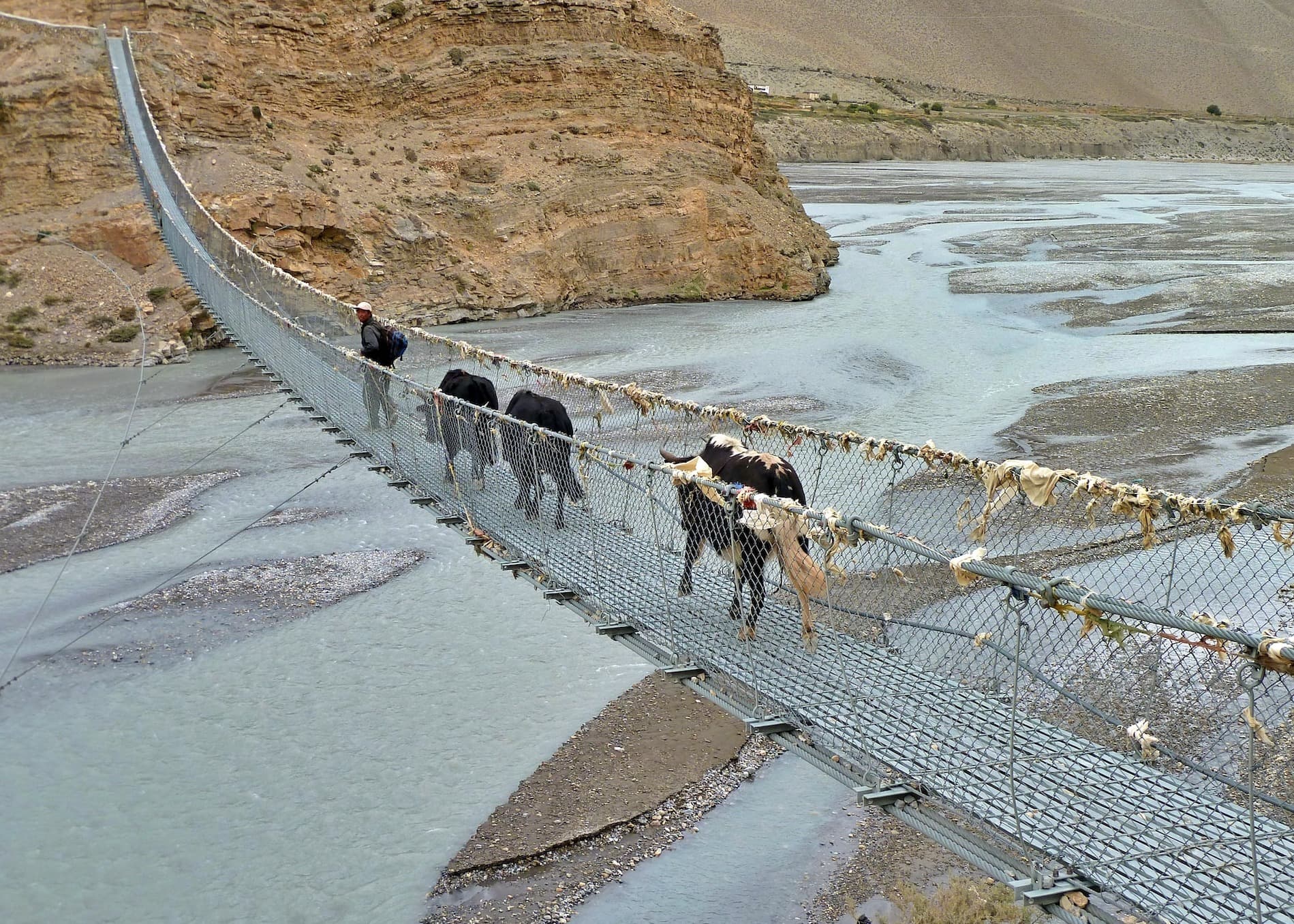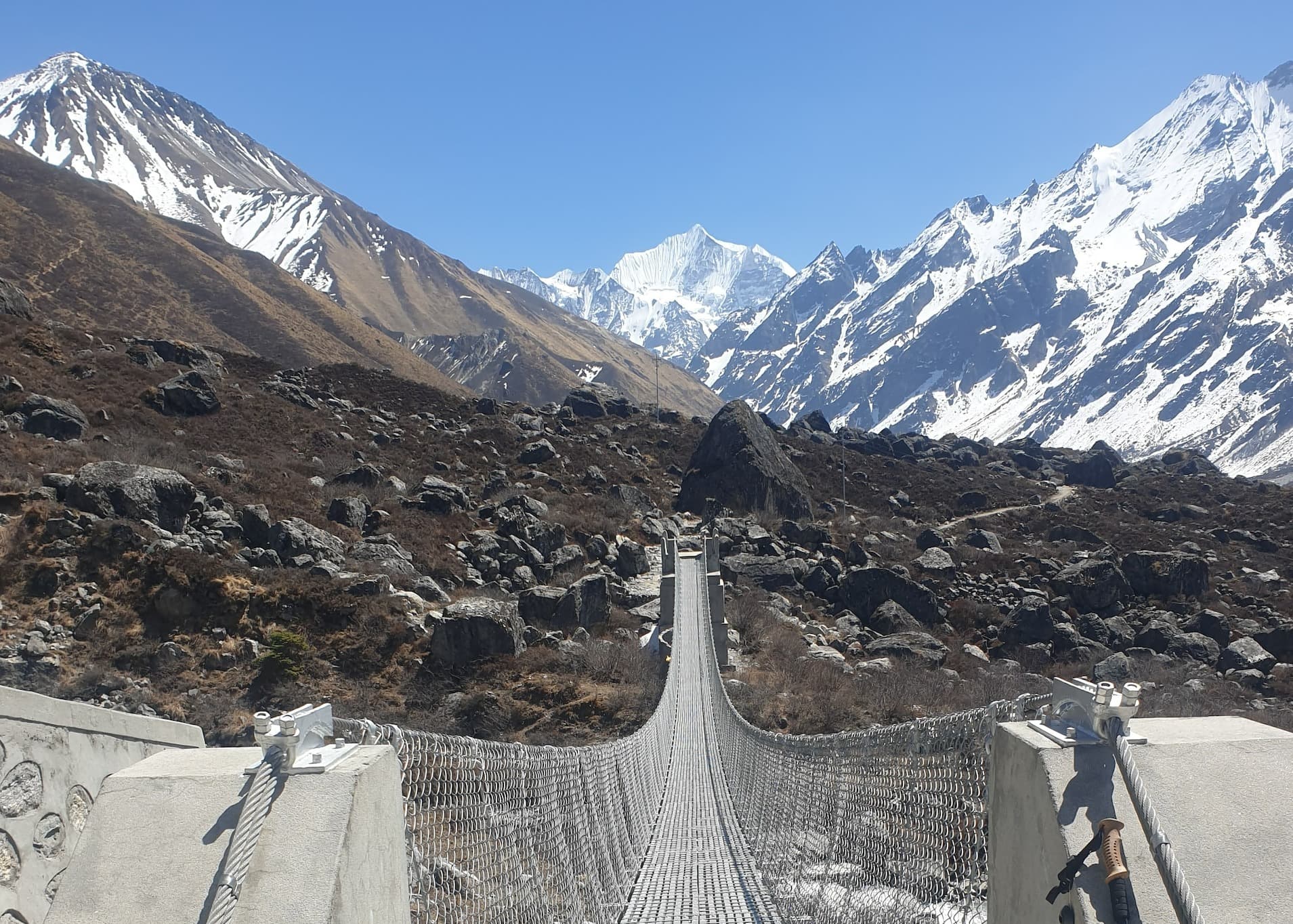Sagarmatha National Park, also known as Everest National Park, is a protected area located in the Solu-Khumbu region of eastern Nepal. It is named after Sagarmatha, the Nepali name for Mount Everest, which is the world's highest peak and a prominent feature within the park.
Established in 1976, Sagarmatha National Park covers an area of approximately 1,148 square kilometers (443 square miles) and is listed as a UNESCO World Heritage site.
It encompasses a wide range of elevation, ranging from 2,845 meters (9,334 feet) at Monjo to the peak of Mount Everest, which stands at a towering height of 8,848.86 meters (29,031 feet).
Sagarmatha National Park is also a haven for wildlife. It serves as a sanctuary for several rare and endangered species, such as the elusive snow leopard, red panda, Himalayan black bear, musk deer, and many species of birds. The park is renowned for its bird-watching opportunities, with around 193 species of birds documented within its boundaries.
This blog will provide information about permits, trekking, flora, and fauna in Sagarmatha National Park.
Sagarmatha National Park Permits
Sagarmatha National Park permits are an essential requirement for anyone wishing to visit and explore the remarkable landscapes and trekking trails of this pristine region in Nepal.
These permits are designed to ensure the preservation and conservation of the park's fragile ecosystem, as well as to manage the flow of tourists and maintain the integrity of the area.
To obtain a permit, visitors must go through authorized agencies or the Nepal Tourism Board. There are two main permits required: the Sagarmatha National Park Entry Permit and the TIMS (Trekkers' Information Management System) Card.
The Sagarmatha National Park Entry Permit is issued by the Nepal Department of National Parks and Wildlife Conservation. This permit allows visitors to enter and explore the designated areas within the national park.
It is important to note that the permit fees vary, Nepali nationals has to pay Rs.100 per person, where trekkers from SAARC nationals have to pay Rs.1500 per person, and for foreign nationals, they have to pay Rs.3000 per person. The permit can be obtained in Kathmandu, specifically at the Department of Immigration or through authorized trekking agencies.
The TIMS Card is an additional permit that is mandatory for all trekkers in the region. It is issued by the Nepal Tourism Board in collaboration with the Trekking Agencies' Association of Nepal (TAAN).
The TIMS Card helps in recording trekkers' information, ensuring their safety, and providing data for future research and planning. It comes in two categories: the Green TIMS Card for independent trekkers and the Blue TIMS Card for trekkers who are part of organized groups.
Obtaining these permits is not only a legal requirement but also contributes to the sustainable management of the park and the livelihoods of local communities. The revenue generated from the permit fees is utilized for the conservation and development of the park, as well as for supporting local infrastructure, education, and health services.
Restrictions and Regulations
Sagarmatha National Park has several regulations in place to protect its unique environment. It is important to follow these guidelines during your visit. Some key regulations include:
- No hunting or killing of wildlife.
- No removal of plants, animals, or cultural artifacts.
- No open fires, except in designated areas.
- No camping above the tree line to prevent environmental degradation.
- Trekkers are required to stay on designated trails and be accompanied by a licensed guide in certain areas.
Popular Trekking Routes
Sagarmatha National Park, located in the Solu-Khumbu region of Nepal, is renowned for its stunning landscapes and being home to the world's highest peak, Mount Everest. The park offers several popular trekking routes that attract adventurers from around the globe. Here are some of the well-known trekking routes in Sagarmatha National Park:
Everest Base Camp Trek: This is one of the most iconic treks in the world, taking you to the base camp of Mount Everest at an elevation of 5,364 meters (17,598 feet). The trek offers breathtaking views of the Himalayan range, including Everest, and provides an opportunity to experience the unique Sherpa culture.
Gokyo Lakes Trek: This trek combines the beauty of the Everest region with the serene Gokyo Lakes. It takes you to the turquoise lakes nestled amidst towering peaks. The highlight of the trek is Gokyo Ri, a vantage point offering panoramic views of Everest, Lhotse, Makalu, and Cho Oyu.
Three Passes Trek: For experienced trekkers seeking a challenging adventure, the Three Passes Trek is an excellent choice. This route crosses three high passes: Kongma La Pass (5,535 meters), Cho La Pass (5,420 meters), and Renjo La Pass (5,360 meters). It offers stunning scenery, remote valleys, and close-up views of Himalayan giants.
Everest Base Camp Trek with Island Peak Climbing: Combining the iconic Everest Base Camp Trek with the thrilling experience of climbing Island Peak can be an extraordinary adventure. Island Peak, also known as Imja Tse, is a popular peak in the Everest region and offers a challenging yet attainable climb for adventurous trekkers.
Flora and Fauna Found Sagarmatha National Park
Sagarmatha National Park, located in the Himalayas of eastern Nepal, is a UNESCO World Heritage Site and home to a diverse range of flora and fauna. Here are some details about the flora and fauna you can find in Sagarmatha National Park.
Flora (Plants) in Sagarmatha National Park
- Alpine Vegetation: Due to the high altitude of Sagarmatha National Park, the vegetation is adapted to survive in extreme conditions. The lower regions of the park are covered in forests primarily composed of blue pine, birch, and hemlock. As you ascend, the forests give way to dwarf rhododendrons, juniper shrubs, and various alpine grasses.
- Rhododendrons: The park boasts a stunning array of rhododendron species. These flowering plants are renowned for their vibrant colors, including shades of red, pink, purple, and white. The blooming season, generally from March to May, transforms the landscape into a breathtaking display of colors.
- Juniper Trees: Juniper trees are found throughout the higher elevation areas of the park. These evergreen conifers have adapted to survive in the harsh alpine environment, with their twisted branches and compact foliage.
- Birch Trees: Silver birch trees, with their distinctive white bark, are prominent in the lower regions of the park. These deciduous trees add a contrasting element to the landscape, especially during autumn when their leaves turn golden.
- Alpine Meadows: The park features picturesque alpine meadows, also known as kharkas or pastures. These open grassy areas are often interspersed with patches of colorful wildflowers during the summer months. They provide essential grazing grounds for herbivores and add to the park's scenic beauty.
- Mosses and Lichens: The park is adorned with an abundance of mosses and lichens, especially in the alpine and subalpine regions. These organisms thrive in the cool and moist environment, covering rocks, tree trunks, and forest floors, adding a touch of greenery to the landscape.
- Alpine Flowers: The alpine meadows of Sagarmatha National Park come alive with a vibrant display of flowers during the summer months. These include various species of primroses, gentians, saxifrages, and asters. The colorful blooms create a striking contrast against the rocky backdrop of the mountains.
- Edelweiss: Edelweiss, a famous mountain flower, can be found in the park's higher elevations. These delicate white flowers with velvety petals grow in clusters and have become a symbol of alpine beauty.
- Medicinal Plants: The park is rich in medicinal plants that have been used by local communities for centuries. Some of these plants have traditional healing properties and are used in Ayurvedic and traditional medicine practices.
Fauna (Animals) in Sagarmatha National Park
- Snow Leopard: Sagarmatha National Park is famous for being one of the habitats of the elusive snow leopard. Considered a flagship species, the park's conservation efforts are focused on protecting this magnificent and endangered big cat. Snow leopards are well adapted to the rugged mountain terrain and are known for their stunning camouflage.
- Himalayan Black Bear: The park is home to the Himalayan black bear, a subspecies of the Asiatic black bear. These bears have a thick black coat and are primarily herbivorous, feeding on vegetation, fruits, and nuts. They can be found in forested areas and are sometimes seen foraging along the park's trekking trails.
- Red Panda: Red pandas are adorable and endangered animals that inhabit the forests of Sagarmatha National Park. These arboreal mammals have a reddish-brown fur coat, a ringed tail, and a bamboo-based diet. Red pandas are skilled climbers and spend most of their time in trees.
- Musk Deer: The Himalayan musk deer is a unique species found in the higher altitude areas of the park. They have distinctive fangs (canines) in males and produce a musk secretion used in traditional medicine. These solitary animals are well adapted to the alpine environment and are known for their excellent camouflage.
- Himalayan Thar: The Himalayan thar is a large mountain goat species that thrives in the rocky and steep slopes of the park. These sure-footed animals have thick, woolly coats that help them withstand the cold temperatures. Male thars have impressive, curved horns, which they use for territorial battles during the breeding season.
- Various Birds: Sagarmatha National Park is a paradise for bird enthusiasts, with its rich avian diversity. The park is home to over 200 bird species, including the colorful Danphe or Himalayan Monal, which is the national bird of Nepal. Other notable bird species include snow pigeons, red-billed choughs, golden eagles, Himalayan griffons, and various species of thrushes, finches, and warblers.
- Migratory Birds: Sagarmatha National Park serves as a crucial stopover for several migratory bird species. During the summer, many birds make their way to the park to breed and raise their young before continuing their journey to warmer regions. These migratory visitors include various warblers, flycatchers, pipits, and thrushes.
- Golden Langur: The park's lower regions are home to the endangered golden langur, a species of leaf-eating monkey. These primates have a striking golden coat, which makes them highly distinctive. They are arboreal and primarily inhabit the forests along the park's southern boundary.
- Mountain Hawk-Eagle: The mountain hawk-eagle is a raptor species that can be found soaring high above the mountains of Sagarmatha National Park. With its powerful talons and keen eyesight, it hunts for prey such as small mammals and birds.
- Insects and Butterflies: The park is also home to a variety of insects and butterflies. The diverse range of flowers and vegetation provides ample nectar sources for these pollinators. You can spot colorful butterflies fluttering through the meadows and forest clearings.
- Amphibians and Reptiles: While not as abundant as the larger mammals and birds, Sagarmatha National Park is home to several amphibians and reptiles. These include various frog and toad species, as well as snakes like the Himalayan pit viper and common krait.
The rich biodiversity of Sagarmatha National Park is a result of its unique Himalayan ecosystem, which encompasses diverse habitats and microclimates. Exploring the park's trails and observing its flora and fauna offers an opportunity to witness the beauty and resilience of nature in the high-altitude regions of Nepal.



